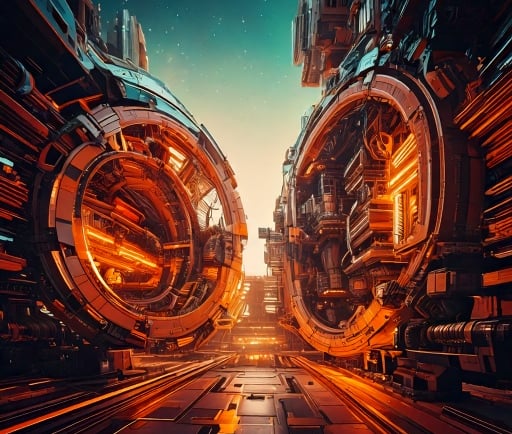Theoretical Warp Drive: A Journey Beyond Light Speed


Introduction to the Theoretical Warp Drive
The concept of a theoretical warp drive has fascinated scientists and science fiction enthusiasts alike for decades. This hypothetical propulsion system aims to enable spacecraft to travel at superluminal speeds, effectively allowing them to 'warp' space-time itself. By redefining our understanding of the limitations imposed by the speed of light, warp drives open new possibilities for interstellar travel, presenting a fascinating arena for theoretical exploration.
The Principles Behind Warp Drive Technology
The mechanics of a warp drive pivot on the principles of general relativity. Proposed by physicist Miguel Alcubierre in 1994, the core idea involves distorting the fabric of space-time to create a 'bubble' around the spacecraft. Within this bubble, the laws of physics as we know them remain unbroken, allowing the vehicle to traverse vast distances in a fraction of the time it would normally take. By contracting space in front of the spacecraft and expanding it behind, the warp drive could supposedly propel a spacecraft faster than light without violating Einstein's theory, which states that nothing with mass can accelerate through space-time at superluminal speeds.
The Implications of Warp Drive on Space Exploration
The potential applications of warp drive technology stretch far beyond mere theoretical physics. Should it become feasible, this technology could revolutionize our approach to space exploration. Missions to distant star systems, such as Alpha Centauri, could become practical within a human lifetime. Additionally, the implications for human colonization of other planets would be monumental, enabling humanity to extend its reach across the galaxy.
Moreover, the successful development of a warping drive would catalyze advancements in numerous fields, including engineering, materials science, and energy generation. New technologies that emerge during the quest to create a warp drive could have unforeseen benefits for life on Earth, fostering innovation that propels us towards a sustainable future.
Nevertheless, many challenges remain in harnessing the theoretical framework of warp drive technology. Understanding the energy requirements for creating and maintaining a warp bubble poses a significant barrier; estimates suggest that it could require an amount of energy equivalent to that of an entire planet or even more. Additionally, the materials to withstand the intense conditions within and around a warp bubble are still elusive.
In conclusion, although the concept of a theoretical warp drive remains firmly in the realm of speculation and science fiction, its implications for future space travel are profound. As research continues and our understanding of the universe expands, we may inch closer to transforming this theoretical concept into a working reality. For those captivated by cosmic exploration, the journey to achieving a warp drive represents not just a technological challenge, but an invitation to dream beyond the stars.
